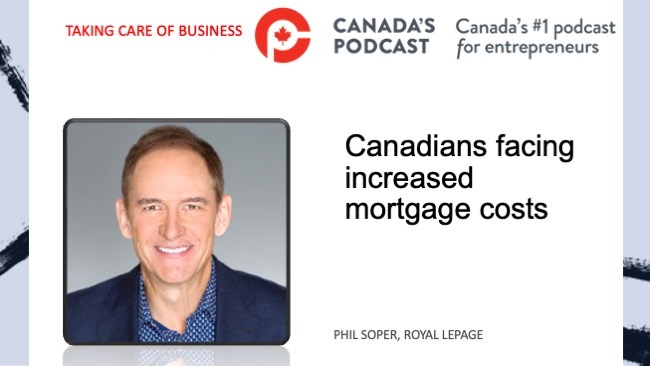Home sales recorded over Canadian MLS Systems edged down by 0.9% from October to November 2023. It was the smallest decline since July, reported the Canadian Real Estate Association on Thursday.

Thirdman
It said the number of transactions came in just 0.9% below November 2022.
“I wouldn’t expect anything too headline-grabbing from the resale housing market for the next few months,” said Larry Cerqua, Chair of
CREA. “That’s a good thing, because a market that looks to be stabilizing in balanced territory increasingly suggests the soft-landing scenario.”
“While it was clear from about August that a lot of buyers were probably going to head back to the sidelines until at least next spring, a surprising number of sellers nonetheless chose to try their luck this fall,” said Shaun Cathcart, CREA’s Senior Economist. “Not getting offers they were willing to accept, it’s looking like many of them are also now resigned to hunker down until next year. It’s probably a good move given that recent expectations around interest rate cuts suggest it might be a somewhat more active spring market than we thought.”
CREA said the number of newly listed homes fell 1.8% on a month-over-month basis in November. This followed a 2.2% decline
in October.
“With new listings down by more than sales in November, the national sales-to-new listings ratio tightened slightly to 49.8% compared to 49.4% in October. It was the first time this measure has increased since April. The long-term average for the national sales-to-new listings ratio is 55.1%.
There were 4.2 months of inventory on a national basis at the end of November 2023, up only slightly from 4.1 months at the end of October. As such, this measure also looks to be stabilizing, and is still almost a full month below its long-term average of near five months of inventory,” said the report.
CREA said the Aggregate Composite MLS Home Price Index (HPI) declined by 1.1% on a month-over- month basis in November 2023, reflecting softer market conditions since the end of the summer.
“Prices often react with a slight lag, so it will be interesting to see if month-over-month declines get smaller or at least stop getting larger in December in response to a stabilizing demand supply balance. While price declines remain mainly an Ontario phenomenon, home prices are also now starting to soften in the Fraser Valley, Winnipeg, and Halifax. Elsewhere in Canada prices are mostly holding firm or in some cases (Alberta, Saskatchewan, New Brunswick, Price Edward Island and Newfoundland and Labrador) continuing to climb,” it said.
“The Aggregate Composite MLS HPI was up 0.6% on a year-over-year basis. The actual (not seasonally adjusted) national average home price was $646,134 in November 2023, up 2% from November 2022.”

Robert Kavcic
Robert Kavcic, Senior Economist with BMO Economics, said Canadian housing affordability is currently the worst it has been since the 1980s, as exuberant price gains were subsequently met by a surge in mortgage rates.
“Since the peak, lower prices have been offset by higher borrowing costs from an affordability perspective, yielding no relief. But, as the cycle turns and rate cuts eventually meet these lower prices, affordability should benefit. Somewhat. The level is still a long way from where it was before the pandemic,” he said.
“Borrowing costs could have already peaked. The Bank of Canada looks very much done their tightening cycle, and we expect that we could see 100 bps of rates cuts in 2024, largely in the back half of the year. In the fixed-rate space, 5-year GoC yields have now crumbled by about 115 bps from the early-October high, which should continue to pressure fixed mortgage rates down into 2024.
“First, we’re not in the financial advice business. From a macro perspective, the 5-year fixed is currently the lowest available for most borrowers, but one should be mindful of the cost/benefit at what could soon be a turning point in the rate cycle.
“We see some further downward pressure on prices in some markets through the spring of 2024 (namely Ontario), but the combination of pent-up demand and easing borrowing costs could finally put a floor under the market. At the same time, market psychology will surely improve given that we have a clearer view of what the worst-case borrowing-cost conditions look like. This, of course, all assumes that the economy holds up relatively well (i.e., stagnant growth, but no deep recession or widespread job loss). That said, the path back to the 2022 price peak will be a long one in Ontario (think years, not months).
“The hurdle for investors to jump back into the market is probably higher than for end users. Expectations of price gains simply aren’t there the way they were earlier in the cycle (think pre-construction buyers); and, the spread between cap rates and risk-free yields is still historically tight. On the latter, we are seeing improvement now with prices down, rents rising and long-term bond yields falling in recent months, so we’re getting closer, but many investors probably still need to see some further adjustment.”
Rishi Sondhi, Economist with TD Economics, said even with rates falling last month, they were still at elevated levels, which was enough to weigh down housing sales.
“However, activity could be turning the corner in Ontario, where sales increased for the first time in several months. Note that in October, per capita sales in Ontario had touched levels around those last consistently seen during the depths of the late 80s through mid-90s housing downturn. This made it reasonable to wonder how much downside could be left, especially with yields coming down in recent months,” he said.
“Despite the gain in sales, conditions in Ontario’s market still heavily favour sellers. This should lead to price discounting in the coming months, with a similar story likely to play out in B.C. Notably, markets are much tighter elsewhere in the country, which should lead to relatively strong price growth moving forward.”

Mario Toneguzzi
Mario Toneguzzi is Managing Editor of Canada’s Podcast. He has more than 40 years of experience as a daily newspaper writer, columnist, and editor. He was named in 2021 as one of the Top 10 Business Journalists in the World by PR News – the only Canadian to make the list
About Us
Canada’s Podcast is the number one podcast in Canada for entrepreneurs and business owners. Established in 2016, the podcast network has interviewed over 600 Canadian entrepreneurs from coast-to-coast.
With hosts in each province, entrepreneurs have a local and national format to tell their stories, talk about their journey and provide inspiration for anyone starting their entrepreneurial journey and well- established founders.
The commitment to a grass roots approach has built a loyal audience on all our social channels and YouTube – 500,000+ lifetime YouTube views, 200,000 + audio downloads, 35,000 + average monthly social impressions, 10,000 + engaged social followers and 35,000 newsletter subscribers. Canada’s Podcast is proud to provide a local, national and international presence for Canadian entrepreneurs to build their brand and tell their story.





